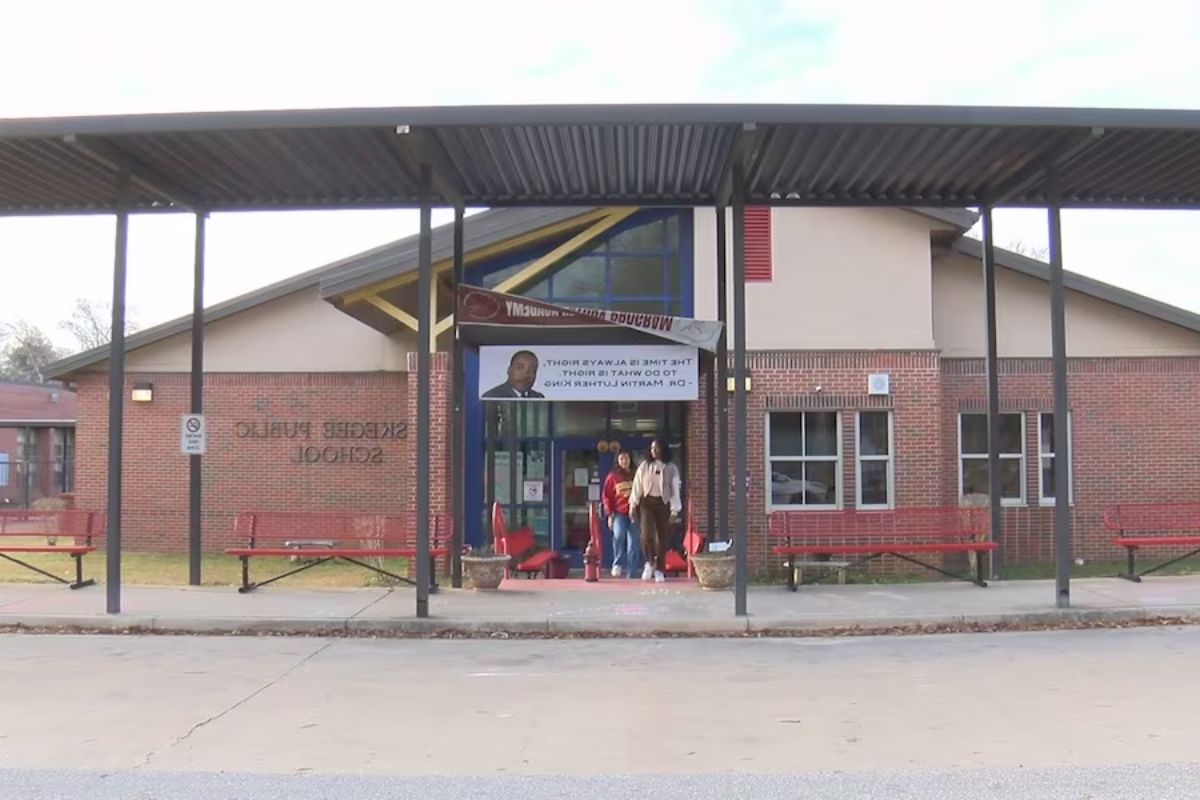Severe Weather Challenges for Alabama: Severe weather presents significant challenges for Alabama schools, impacting both educational continuity and student safety.
With a county-by-county approach, collaboration among school districts is crucial in navigating transportation disruptions caused by dirt roads and other logistical hurdles.
Balancing the need for safety with effective instructional methods poses further challenges.
The intricate and multifaceted issues faced by Alabama schools in their pursuit of maintaining educational excellence amidst severe weather conditions.
Key Takeaways
– Severe weather conditions have led to widespread school closures throughout Alabama.
– Collaboration between school districts and county Emergency Management Agency (EMA) directors ensures effective response to unique weather conditions in each area.
– Alabama schools are adopting a county-by-county approach to collaborate and address the unique weather conditions they face.
– Macon County faces significant transportation challenges during severe weather, with approximately 90% of students relying on school buses that navigate dirt roads.
Severe Weather Impact: School Closures Across Alabama
Severe weather conditions have led to widespread school closures throughout Alabama. The recent snowfall in north Alabama and subfreezing temperatures in central Alabama have prompted individual school districts to prioritize the safety of students and staff.
The decision-making process for school closures is decentralized, with each district relying on county Emergency Management Agency (EMA) directors for swift assessments. This ensures that schools can respond effectively to the unique weather conditions in their respective areas. The EMA directors play a crucial role in providing accurate and timely information about road conditions, power outages, and other factors that impact the safety of school operations.
County-by-County Approach: Collaboration Amidst Severe Weather Challenges
Amidst the challenges posed by severe weather, Alabama schools are adopting a county-by-county approach to collaborate and address the unique weather conditions they face. This approach recognizes the diverse nature of weather patterns across the state and allows for tailored solutions based on specific county needs. Here are four key aspects of this collaborative approach:
1. Superintendents and Emergency Management Agency (EMA) directors work closely together to make informed decisions regarding school closures and delays. Their collaboration ensures that the safety of students and staff is prioritized.
2. The decision-making process takes into account a range of factors, including weather forecasts, road conditions, and input from local emergency services. This comprehensive approach allows for a well-informed assessment of the situation.
3. The county-by-county approach is particularly crucial in rural areas, where challenges are often amplified. By considering the specific conditions in each county, schools can better address the unique needs and resources available.
4. Ongoing communication and collaboration between counties enable the sharing of best practices and lessons learned. This collective knowledge strengthens the overall response to severe weather challenges and fosters a sense of unity among Alabama schools.
Through this county-by-county approach, Alabama schools are proactively addressing the complexities of severe weather and ensuring the safety and well-being of their students and staff.

ALSO READ: Alabama Are Without Power Due To Severe Weather
Macon County’s Transportation Challenges
Macon County faces significant transportation challenges during severe weather, with approximately 90% of students relying on school buses that navigate areas accessible only via dirt roads. This reliance on dirt roads poses a major problem during adverse weather conditions, such as heavy rainfall, which renders these roads impassable. As a result, the transportation of students becomes severely disrupted, impacting their ability to attend school and receive an education.
The unique geography of Macon County, with its predominance of dirt roads, exacerbates the issue. The lack of paved roads in these areas makes it difficult for buses to safely navigate, especially in times of severe weather. This can lead to delays, cancellations, and even accidents, putting the safety of students at risk.
The transportation challenges faced by Macon County require innovative solutions to ensure the safety and education of its students. Collaboration between local authorities, school officials, and community members is crucial in finding ways to mitigate these challenges and provide reliable transportation options during severe weather events.
Logistical Hurdles: Dirt Roads and Transportation Disruptions
The logistical hurdles posed by dirt roads and transportation disruptions in Macon County require innovative solutions to ensure the safe and efficient transportation of students.
The prevalence of dirt roads in the county presents a significant challenge during severe weather, particularly after heavy rain. Buses struggle to navigate these terrains, leading to disruptions in the transportation system.
To address this issue, the following measures should be considered:
1. Road Maintenance: Regular grading and graveling of dirt roads can help improve their condition, making them more accessible for school buses.
2. Alternative Routes: Identifying alternative routes that avoid dirt roads can help minimize transportation disruptions during severe weather events.
3. Communication Systems: Implementing effective communication systems between schools, transportation departments, and parents can help ensure timely updates regarding transportation changes or delays.
4. Fleet Upgrades: Investing in vehicles equipped to handle challenging terrains, such as buses with improved traction and stability features, can enhance transportation reliability. To ensure educational continuity during severe weather, Alabama schools face the challenge of balancing safety considerations with effective instruction methods.
While face-to-face instruction is preferred, the option of virtual learning exists, although it comes with the requirement to make up instructional days if not implemented. This adds complexity to the decision-making process for school administrators.
Dr. Williams emphasizes the importance of prioritizing student welfare, recognizing the delicate balance between maintaining educational continuity and ensuring safety, especially in rural areas with unique challenges. The safety of students and staff is of utmost importance, but it is also crucial to provide quality instruction that meets educational standards.
Finding the right balance between safety and effective instruction methods is a constant challenge that Alabama schools must navigate during severe weather events.
Conclusion Of Severe Weather Challenges for Alabama
Severe weather poses significant challenges for Alabama schools. This includes issues such as school closures, transportation difficulties, and maintaining educational continuity. Collaboration among counties is crucial to address these challenges effectively.
Macon County, in particular, faces transportation challenges due to its dirt roads and disruptions caused by severe weather. This makes it even more important for schools in this area to work together with other counties to find solutions.
Balancing safety and instruction methods is also a key concern for schools. They need to ensure the safety of students and staff during severe weather events, while also providing educational opportunities.
Overall, addressing these issues requires a comprehensive and collaborative approach. Schools need to work together with county officials, transportation authorities, and other relevant stakeholders to ensure the safety and educational continuity of Alabama’s students.
Our Reader’s Queries
How do I turn on weather alerts?
Activate Weather alerts on your Android 12 device by swiping up from the bottom of the home screen to open the app drawer. Find the Weather app and long-press the icon. Then, tap the App info button from the options that appear. Next, go to Notifications and simply slide the Weather alert button to the on position to enable weather alerts.
Can Google home give weather alerts?
Easily check the weather and upcoming forecast for your area using just your voice with a Google Nest or Home speaker or display.
How do I turn on weather alerts on Android?
Navigate to the “Settings” app on your Android device. Tap on “Notifications” and then select “Advanced Settings.” From there, choose “Wireless emergency alerts” and switch on the “Allow Alerts” option. Make sure to turn on all the alert options listed below to ensure you receive important notifications.
What is the weather alert app for Android?
The Storm Shield app delivers severe weather alerts to users based on their exact location. It uses voice alerts, like a NOAA weather radio, through push notifications. The app also provides access to radar maps, current conditions, and hourly and daily forecasts. It includes nationwide radar, NWS forecasts, and severe weather alerts to keep you informed and safe.

